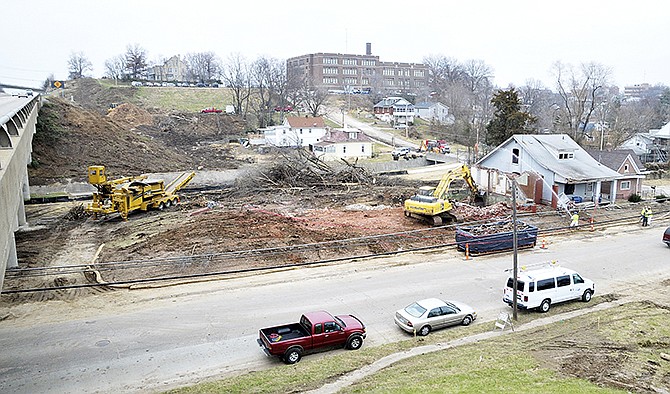Work has begun on the Lafayette Street interchange with the U.S. 50/63 Expressway in Jefferson City.
Crews have been doing some demolition work this week along Lafayette, as part of the $20 million project.
The formal groundbreaking on the project is scheduled to take place next week.
In October, the Missouri Highways and Transportation Commission awarded the contract to Emory Sapp and Sons of Columbia, the low bidder.
The project includes the interchange, a third lane on the Expressway in each direction between Monroe Street and Clark Avenue, five new bridges and rehabilitation of a sixth bridge.
MoDOT officials said the improvements will take about two years to complete.
Among the buildings being demolished this week is "The Monastery," 504 Lafayette St., known by some as a piece of the Harlem Renaissance.
In the 1930s, the building received the name "Monastery" from two young and single authors, who also were Lincoln University professors - Cecil Blue and Lorenzo Greene.
The home is eligible for listing on the National Register of Historic Places, but no one came forward with any plan to save the building by moving it.
Historian Gary Kremer, an LU graduate, said the home became an off-campus site for faculty-student interaction.
"All-night discussions about President Roosevelt's New Deal, international communism, race relations and the growing menaces in Germany and Japan became common," Kremer told the News Tribune last year.
"The Monastery" developed a reputation among black intellectuals, many who were influenced to attend Lincoln because it was near that home.
"No person of any note ever came to Lincoln without coming to the "Monastery,'" Greene had said.

